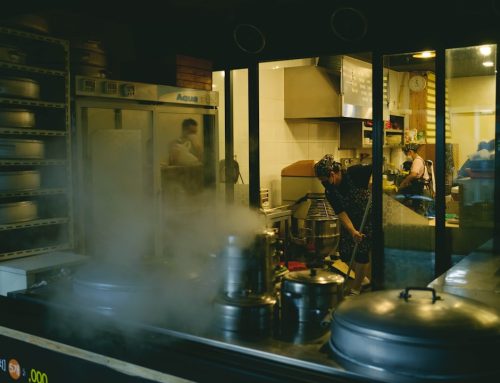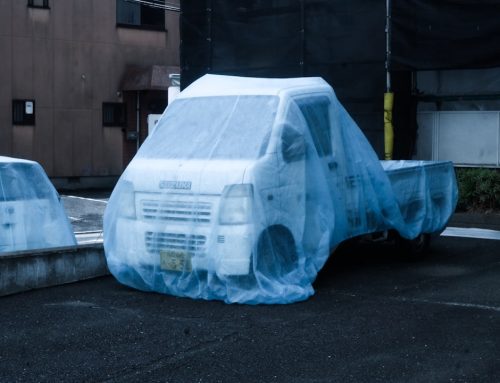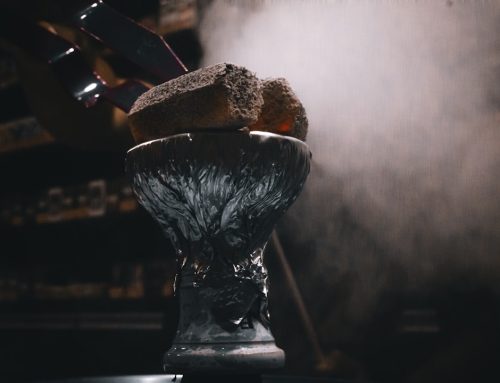Can Steam Help Clean Out Spilled Milk or Drinks in Cars?
Spilled milk or drinks in cars is a common yet frustrating issue that many vehicle owners face. Whether it is a toddler’s sippy cup that has tipped over or a coffee cup that has met an unfortunate fate during a bumpy ride, the aftermath can be quite distressing. The immediate concern is often the visible mess, but the implications extend far beyond mere aesthetics.
Spills can lead to unpleasant odours, unsightly stains, and even the growth of bacteria if not addressed promptly and effectively. The significance of tackling these spills cannot be overstated. A clean car interior not only enhances the driving experience but also maintains the vehicle’s value.
For car wash operators, detailers, and service centres, addressing spills efficiently is crucial for customer satisfaction and retention. Traditional cleaning methods often fall short, leaving behind residues and lingering smells that can detract from the overall cleanliness of the vehicle. This is where innovative cleaning solutions come into play, offering a more effective approach to tackling the challenges posed by spills.
Summary
- Spilled milk or drinks in cars can lead to unpleasant odours and stains if not cleaned properly.
- Using steam for cleaning spills in cars is effective as it helps to break down and lift the stains and odours.
- The advantages of using steam for cleaning spills in cars include its eco-friendliness, sanitising properties, and ability to reach tight spaces.
- Steps for using steam to clean spilled milk or drinks in cars include vacuuming the area, applying steam, and wiping away the residue.
- Precautions to take when using steam for cleaning spills in cars include wearing protective gear and ensuring proper ventilation.
The Science Behind Using Steam to Clean Spills
Steam cleaning operates on a simple yet effective principle: high-temperature steam penetrates surfaces, loosening dirt, grime, and stains while simultaneously sanitising the area. The science behind this method lies in the temperature of the steam, which typically exceeds 100 degrees Celsius. At this temperature, steam can effectively kill bacteria, viruses, and mould, making it an ideal solution for cleaning spills that may harbour harmful pathogens.
When steam is applied to a spill, it works by breaking down the molecular structure of the liquid, allowing it to be easily wiped away. This process not only cleans but also sanitises the surface, ensuring that any potential health risks associated with spills are eliminated. The combination of heat and moisture allows steam to penetrate fabrics and upholstery deeply, reaching areas that traditional cleaning methods may miss.
This scientific approach to cleaning is particularly beneficial for car interiors, where spills can seep into carpets and upholstery, creating long-lasting issues if not addressed properly.
Advantages of Using Steam for Cleaning Spills in Cars

The advantages of using steam for cleaning spills in cars are manifold. Firstly, steam cleaning is highly effective at removing stubborn stains and odours that can linger long after a spill has occurred. The high temperature of the steam not only lifts stains but also neutralises unpleasant smells, leaving the interior of the vehicle smelling fresh and clean.
Another significant benefit is the sanitising effect of steam cleaning. As mentioned earlier, steam kills bacteria and viruses, making it an excellent choice for cleaning areas that may be prone to germs, such as cup holders and seat upholstery. This is particularly important in today’s health-conscious environment, where cleanliness is paramount.
Additionally, steam cleaning is safe for a variety of surfaces, including leather and fabric upholstery, making it a versatile option for car detailing. Moreover, steam cleaning is an eco-friendly solution that requires minimal water compared to traditional methods. This not only conserves water but also reduces the need for harsh chemicals that can be harmful to both the environment and the vehicle’s interior.
The quick drying time associated with steam cleaning is another advantage; vehicles can be ready for use shortly after treatment, minimising downtime for both detailers and customers.
Steps for Using Steam to Clean Spilled Milk or Drinks in Cars
Using steam to clean spilled milk or drinks in cars is a straightforward process that can yield impressive results. The first step involves preparing the steam cleaner according to the manufacturer’s instructions. Ensure that the machine is filled with water and heated to the appropriate temperature for effective cleaning.
Once the steam cleaner is ready, begin by assessing the area of the spill. If the spill has dried or hardened, it may be beneficial to lightly dampen it with water before applying steam. This will help loosen any residue that may have formed.
Next, direct the steam nozzle towards the affected area, holding it a few inches away from the surface to avoid damage. Move the nozzle in a circular motion to ensure even coverage and allow the steam to penetrate deeply into the fabric or upholstery. After applying steam for a few seconds, use a clean cloth or sponge to wipe away the loosened residue.
You may need to repeat this process several times for stubborn stains or odours. Once you have thoroughly cleaned the area, allow it to air dry completely before using the vehicle again. This method not only cleans but also sanitises the area, ensuring that any lingering bacteria or odours are eliminated.
Precautions to Take When Using Steam for Cleaning Spills in Cars
While steam cleaning is generally safe and effective, there are several precautions that should be taken to ensure optimal results and prevent damage to the vehicle’s interior. Firstly, always read and follow the manufacturer’s instructions for your specific steam cleaner model. Different machines may have varying requirements regarding temperature settings and nozzle attachments.
It is also essential to test a small, inconspicuous area before applying steam to larger sections of upholstery or fabric. This will help you determine how the material reacts to heat and moisture, preventing any potential damage or discolouration. Additionally, avoid using steam on delicate surfaces such as certain types of leather or vinyl without first consulting manufacturer guidelines.
When using a steam cleaner, be mindful of your surroundings and ensure that you are working in a well-ventilated area. The high temperatures involved can create steam clouds that may obscure visibility or cause discomfort if inhaled directly. Lastly, always handle the steam cleaner with care; the nozzle can become extremely hot during use, so take precautions to avoid burns or injuries.
Alternative Methods for Cleaning Spilled Milk or Drinks in Cars

While steam cleaning offers numerous advantages for tackling spills in cars, there are alternative methods available that may also be effective depending on the situation. One common approach is using absorbent materials such as paper towels or cloths to blot up as much of the spill as possible before applying any cleaning solution. This initial step can help minimise staining and odours.
Following this, many people turn to commercial cleaning products specifically designed for automotive interiors. These products often contain enzymes that break down organic matter found in spills like milk or juice. However, it is crucial to choose products that are safe for use on your vehicle’s specific materials to avoid damage.
Another alternative method involves using a mixture of vinegar and water as a natural cleaning solution. Vinegar is known for its deodorising properties and can help neutralise unpleasant smells while also acting as a mild disinfectant. However, like commercial cleaners, it is essential to test this solution on an inconspicuous area first.
Lastly, vacuuming can be an effective way to remove solid debris from spills before applying any liquid cleaners. A high-quality vacuum with attachments designed for upholstery can help lift particles from carpets and seats effectively.
Tips for Preventing Spills in Cars
Preventing spills in cars is often more manageable than dealing with them after they occur. One effective strategy is to invest in spill-proof containers for drinks, especially when travelling with children or during long commutes. These containers are designed to minimise leaks and spills while still providing easy access to beverages.
Another tip is to establish designated areas within the car for food and drinks. By keeping snacks and beverages confined to specific locations—such as cup holders or designated storage compartments—you can reduce the likelihood of accidents occurring during transit. Additionally, consider using protective covers on seats and carpets if you frequently transport children or pets.
These covers can be easily removed and cleaned if spills do occur, protecting your vehicle’s interior from permanent damage. Lastly, educating passengers about being cautious with food and drinks while in motion can go a long way in preventing spills. Encouraging them to wait until the vehicle is stationary before consuming items can help maintain a clean environment inside your car.
Conclusion and Final Thoughts on Using Steam for Cleaning Spills in Cars
In conclusion, using steam for cleaning spilled milk or drinks in cars presents an effective solution that addresses both cleanliness and sanitation concerns. The science behind steam cleaning demonstrates its ability to penetrate surfaces deeply while killing harmful bacteria and neutralising odours—making it an ideal choice for car detailing professionals and everyday vehicle owners alike. While alternative methods exist for tackling spills, none offer the same level of efficiency and effectiveness as steam cleaning when it comes to sanitising surfaces while preserving their integrity.
By following proper procedures and taking necessary precautions when using steam cleaners, individuals can achieve remarkable results in maintaining their vehicles’ interiors. Ultimately, investing in a quality steam cleaner not only saves time and effort but also enhances customer satisfaction for car wash operators and detailers alike. With proper care and attention, vehicles can remain clean and inviting spaces for all who enter them—ensuring that spills become less of a concern in our daily lives on the road.
FAQs
What is steam cleaning?
Steam cleaning is a method of cleaning that uses hot steam to remove dirt, stains, and bacteria from various surfaces. It is an eco-friendly and chemical-free way of cleaning.
Can steam help clean out spilled milk or drinks in cars?
Yes, steam can effectively clean out spilled milk or drinks in cars. The hot steam helps to break down the stains and odours, making it easier to wipe them away.
Is steam cleaning safe for car interiors?
Yes, steam cleaning is safe for car interiors. It is a gentle and non-abrasive cleaning method that does not damage the upholstery or other surfaces in the car.
What are the benefits of using steam for cleaning car interiors?
Using steam for cleaning car interiors has several benefits, including effectively removing stains and odours, killing bacteria and germs, and being an eco-friendly and chemical-free cleaning method.
Can steam cleaning remove stubborn stains and odours from car interiors?
Yes, steam cleaning can effectively remove stubborn stains and odours from car interiors. The hot steam helps to break down the stains and odours, making them easier to clean and eliminate.
Subscribe to the newsletter
Subscribe to us for tips, events and promotions.






